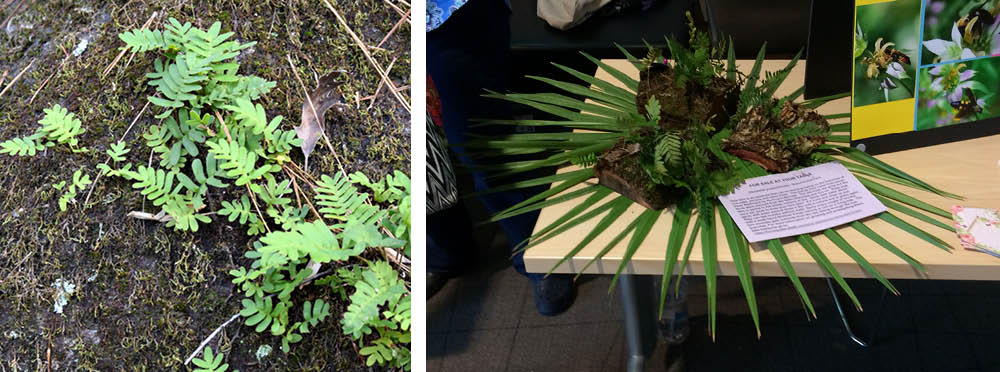A fitting plant to profile as we head into the new GNPS structure is resurrection fern: as you can see from its name, it is a plant known for rebirth. It is also an evergreen plant, and it is found statewide. These are all characteristics that I hope for GNPS in 2020!
Resurrection fern (Pleopeltis polypodioides, formerly Polypodium polypodioides) is a small native fern in the Polypodiaceae family. This fern is an epiphytic plant, which is a plant that might grow on another plant and is dependent on that plant for support but not for nutrition. It is found statewide and is typically found on trees, fallen logs, stumps, ledges, and rocks. It will also grow on some manmade structures.
In both North Georgia and South Georgia, I primarily see it growing on oak limbs. It will also grow on the limbs of certain other trees such as Southern magnolia and pecan. The plant takes its common name from its characteristic of appearing dead when moisture is sparse but springing back to ‘life’ when rehydrated.

Left: Resurrection fern (Pleopeltis polypodioides) growing on a rock at Hard Labor Creek State Park. Right: Fern plants rescued from pecan trees downed by Hurricane Michael joined saw palmetto fronds to grace 2019 GNPS Symposium tables.
If nature doesn’t plant resurrection fern in your yard, you can get a start of the fibrous rhizome from a friend and press it into a nook or cranny with a little moist natural material to anchor it. If conditions are favorable, it will attach and spread. At last year’s symposium, Amy Heidt used fern-covered broken pecan limbs as table arrangements and they were available for purchase at the end of the day.

